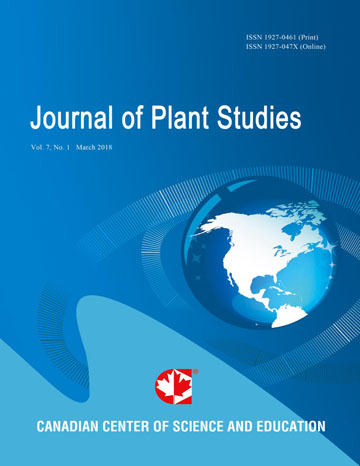The Physiology of Chilling Temperature Requirements for Dormancy Release and Bud-break in Temperate Fruit Trees Grown at Mild Winter Tropical Climate
- Abayneh Melke
Abstract
It is studied that inadequate winter chilling may interfere with the normal processes of plant growth, reproductive development and subsequent yield. As much of the evidences behind these studies are subjective and region based, the available information was collated and evaluated to further investigate the impacts of winter chill that is currently an issue of fruit growers in mild winter areas. Though, the period of adequate low temperatures is insufficient in warmer regions to satisfy the chilling requirements of temperate fruit trees, this call up on many option for chill compensation; like planting low chill cultivars, use of dormancy breaking chemicals, forced defoliation, pruning and some other techniques as an alternative strategies. However, the diverse agro-climatic conditions due to major differences in altitude, rainfall as well as in slope characteristics showed the existence of different chilling temperature requirements across locations that favor many temperate fruit trees to grow: including apple, pear, grape, peach, nectarine, plum, cherry, walnut, almond and other fruit tree species. Temperate fruit production in mild winter areas now days increased rapidly and even more new industries are being developed in regions where none previously existed. To date, in tropical highlands, fruit productivity and quality have been gradually improved through introduction and selection of better adaptable varieties based on their chilling requirements. To supplement the present existing knowledge gap in relation to the cultivar-environment interactions, the use of chill models to quantify chill accumulation during winter months would help in classifying the environment (potential growing areas) according to the amount of chill hours existed in that location.
Up to date, a number of valid methods were applied for quantification of chill accumulation in tropical and sub-tropical conditions showed varying results depending on the types of species, existing warm temperature and other climatic variables. The limitation in their predictive performance from region to region is due to their designing approaches that were primarily for temperate climate. This requires a model comparison for specific location, i.e. by using more than one model to avoid the potential misleading in calculation and chill estimation. Of the chill models tested to quantify the chill accumulation in the mild winter areas, the use of dynamic model gave good estimation that it nullifies the chilling reversal by high temperature. Also, the model of Positive Chill Units (PCU, or Positive Utah) is a competent under warm climate, next to the dynamic model. The Positive Utah model, an iteration of the original Utah, excludes the negation influence of high temperatures. The procedure for PCU is the same as for the original Utah model except that, when negative, the chill unit value is set equal to zero. Therefore, the accumulated chill units are equal to zero until the temperatures drop into the effective zone and positive chill units begin to accumulate. Though, for these areas with warm climate, using the 0 - 7.2 °C model is not recommended, because of its sensitivity to changes in temperatures that represent different weighing factors recorded for other models. Other important alternatives to these classical models include, the Growing Degree Hour Model (GDH), the Mean Temperature Model, Exponential temperature response functions and others are applied as independently, or in combination with classical chill models for a better chill estimation. Winter chill should be studied like other weather dependent processes because the present trends in chill decline across locations significantly affect fruit culture in areas with mild winter. Therefore, identifying the problems related with lack of insufficient winter chilling would help in designing possible strategies for the changing scenarios and understanding the current physiological responses of the plant against these changes.- Full Text:
 PDF
PDF
- DOI:10.5539/jps.v4n2p110
Journal Metrics
h-index (December 2021): 17
i10-index (December 2021): 37
h5-index (December 2021): N/A
h5-median(December 2021): N/A
( The data was calculated based on Google Scholar Citations. Click Here to Learn More. )
Index
Contact
- Joan LeeEditorial Assistant
- jps@ccsenet.org
